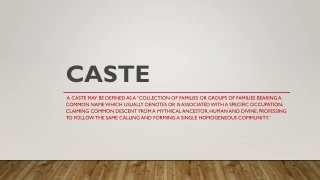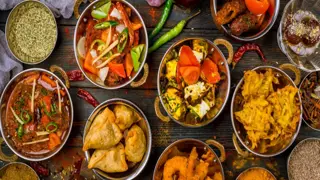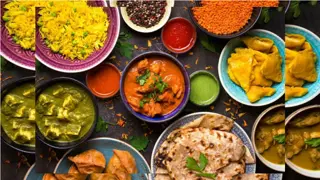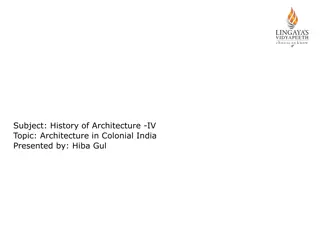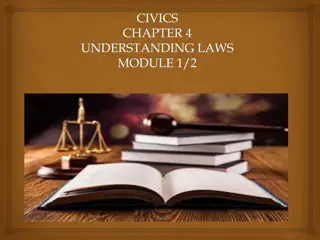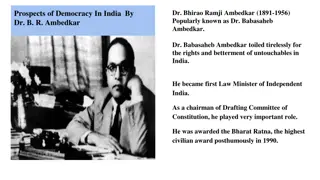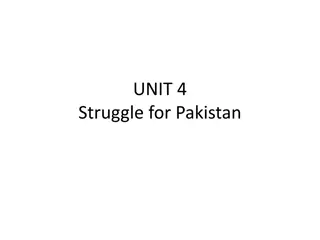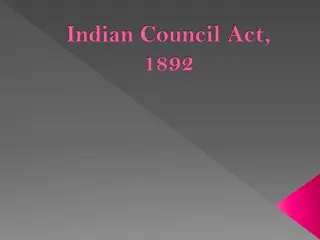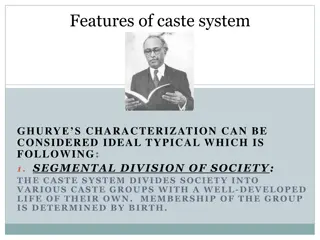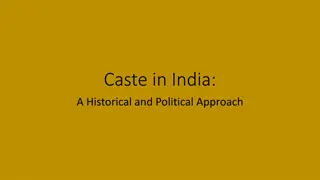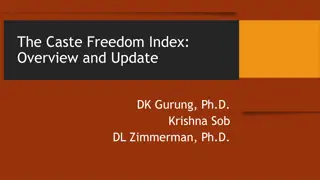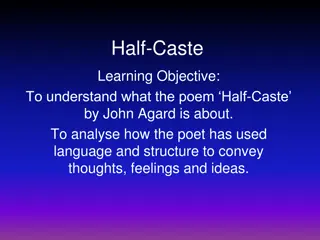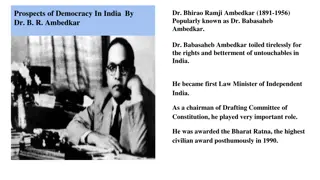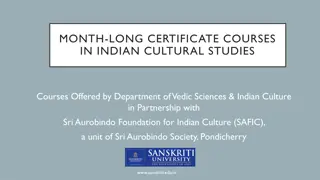Evolution of Caste in Post-Colonial Indian Society
Changes in Indian society post decolonization have led to the de-ritualization of caste, resulting in a shift towards a kinship-based cultural community operating in a new system of social stratification. Secularization of caste has detached it from ritual hierarchy and aligned it with competitive democratic politics, allowing for the emergence of a diversified middle class with new identities. The process of de-ritualization and politicization has opened avenues for individual economic and social-political empowerment, fostering a new societal landscape in India.
Download Presentation

Please find below an Image/Link to download the presentation.
The content on the website is provided AS IS for your information and personal use only. It may not be sold, licensed, or shared on other websites without obtaining consent from the author. Download presentation by click this link. If you encounter any issues during the download, it is possible that the publisher has removed the file from their server.
E N D
Presentation Transcript
Introduction The changes that have occurred in Indian society after decolonization have led to a de-ritualization of caste. A large part of the support system of caste has collapsed due to this erosion of rituality. Consequently, caste now survives as a kinship-based cultural community but operates in a different newly emergent system of social stratification. Members of different castes form themselves into larger horizontal social groups and by that they now increasingly compete for entry into the middle class. In the process caste is changing its old pre-independence character and composition. This new and vastly enlarged middle class is becoming, though slowly, politically and culturally more unified but highly diversified in terms of the social origins of its members.
Secularization of Caste Secularization of caste refers to the process by which caste has changed and a new type of stratificatory system has emerged. Two important consequences appear in this process: i. It has detached caste from the ritual status hierarchy on the one hand; and ii. Has imparted it a character of the power-group functioning in the competitive democratic politics on the other. Changes in caste thus could be observed along these two dimensions of secularization: de-ritualization and politicization.
Impacts of these Changes i. Have pushed caste out of the traditional stratificatory system. Linked it to the new structure of representational power. iii. In their cumulative impact such changes have made it possible for individual members of different castes to acquire new economic interest and social- political identification and own class-like as well as ethnic-type identities. Thus secularization of caste through its de- ritualization and politicization has opened up a third course of change. Prof D.L.Sheth calls it classisation . These three processes of change in caste have their implications for the emergence of a new type of satisfactory system in India. ii.
De-Ritualization of Caste Caste is an insulated system of ritual status hierarchy, embedded in the perennial religious culture of India. Rituality refers to rootedness of caste behaviour and organization in the religious ideology and practices. Rituality, thus, constituted the core of the whole system of castes. It enabled caste to maintain autonomy and stability of status hierarchy in the face of changes, both economic and political, that occur in the wider society. The insularity of the caste system is thus guaranteed, because it is bounded by certain ideological and structural contexts-each articulating a form of rituality.
Features of the Ideological and Structural Contexts More specifically, these contexts pertain to: i. The religious ideology of purity and pollution; ii. The religiously sanctioned techno-economic and political organization of the village, especially its food production and distribution system; iii. Customs and traditions of castes evolved over centuries. Castes not only survived but grew in these contexts and acquired its systematic character. They constituted caste s support system of the ritual hierarchy.
Changes after Decolonization The changes that have occurred in Indian society, especially after India s decolonization, have led to de- ritualization of caste. De-ritualization of caste refers to delinking of caste from various forms of rituality which bounded it to a fixed status, an occupation and to specific rules of commensality and endogamy. With the erosion of rituality, a large part of the support system of caste has collapsed. After being uprooted from its ritually determined ideological, economic and political contexts caste has ceased to be a unit of the ritual-status hierarchy. It now survives as a kinship-based cultural community, but operates in a newly emergent system of social stratification.
Horizontalization of Caste There has been a release of new economic and political power in the society owing to modernization of India s economy and democratization of its political institutions. Horizontalization of caste refers to a change in the form of consciousness. The consciousness of members belonging to a caste is expressed more in the nature of community consciousness, rather than in hierarchical terms. Caste consciousness is now articulated as political consciousness of groups staking claims to power and to new places in the changed opportunity structure. It is a different kind of collective consciousness from that of belonging to a high or low ritual status-group.
Horizontalization of Caste (Contd.) This has led to an increase in competition and conflict among them. Reference can be made to the new power system created by elections, political parties and above all by social policies-such as of affirmative action- of the state. Fundamental changes in occupational structure have occurred as a vast number of non-traditional, unbound-to-caste occupations and a new type of social relations among occupational groups have emerged. The nexus between hereditary ritual status and occupation has broken down. The traditional, ritualistic idea of cleanliness or otherwise of the occupation one follows has become unimportant.
Horizontalization of Caste (Contd.) Rather, the crucial consideration is what brings a good income to the individual. So a brahman dealing in leather or an ex-untouchable dealing in diamonds is no longer looked upon as a socially deviant behaviour. Another important change is that the cleanliness or otherwise of an occupation is increasingly seen in physical and biological sense than in ritual or moral terms. There are also significant structural differentiations which have taken place within every caste.
Horizontalization of Caste (Contd.): Structural Differentiations within Caste As a result what one finds today, households within a single caste have not only been greatly differentiated in terms of their occupations, educational and income levels and lifestyles but these differences have led them to align outside the caste, with different socio- economic networks and groupings in the society. The caste rules of commensality (i.e., restrictions about accepting cooked food from members of other castes) have become almost totally inoperative outside one s household. The castes occupying a similar ritual status in the traditional hierarchy, but divided among themselves into sub-castes and sub-sub-castes by rules of endogamy, are now reaching out increasingly into larger endogamous circles.


